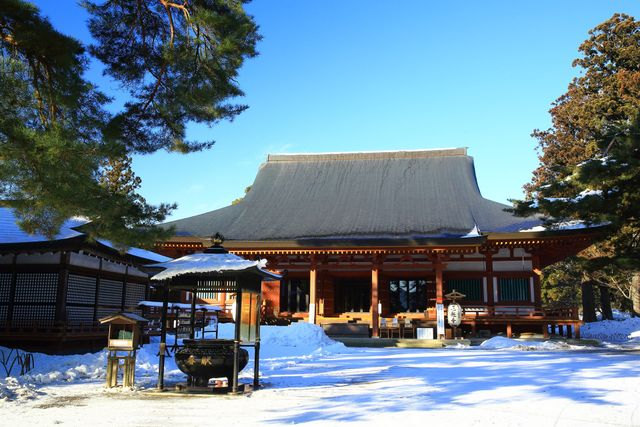Mōtsū-ji Temple
menuMenu
Mōtsū-ji Temple, with its magnificent Heian-period structures and stunning pond-style strolling garden, is a quintessential Hiraizumi sightseeing spot and a UNESCO World Heritage site.








Highlights
- The Golden Hall, enshrining a standing statue of Yakushi Nyorai (Medicine Buddha) from the late Heian period
- The breathtaking beauty of the pond-style strolling garden
- Historically significant structures registered as a UNESCO World Heritage Site
- The magnificent scale of the temple complex, once said to have surpassed Chūson-ji Temple
- A harmonious blend of seasonal nature and history
Basic Information
- Address
- Mōtsū-ji 1, Hiraizumi, Hiraizumi-chō, Nishiiwai-gun, Iwate Prefecture Search for tourist attractions in Iwate
- Access
- 9-minute walk from Hiraizumi Station on the Tohoku Main Line (JR East). Alternatively, take the Iwate Kenkotsu Hiraizumi Town Loop Bus "RunRun" and get off at the Mōtsū-ji bus stop. Show route
- Op.Hours
- April 5th - November 4th: 8:30 AM - 5:00 PM November 5th - April 4th: 8:30 AM - 4:30 PM
- Cld.Days
- Open every day
- Fee
- Admission Fee: ¥700
- INFO
- Mukoji Temple Municipal Parking Lot (Hiraizumi Town): 350 parking spaces available. Paid parking for general public. Free for people with disabilities. Discount available between this parking lot and the Chusonji Temple Municipal Parking Lot.
